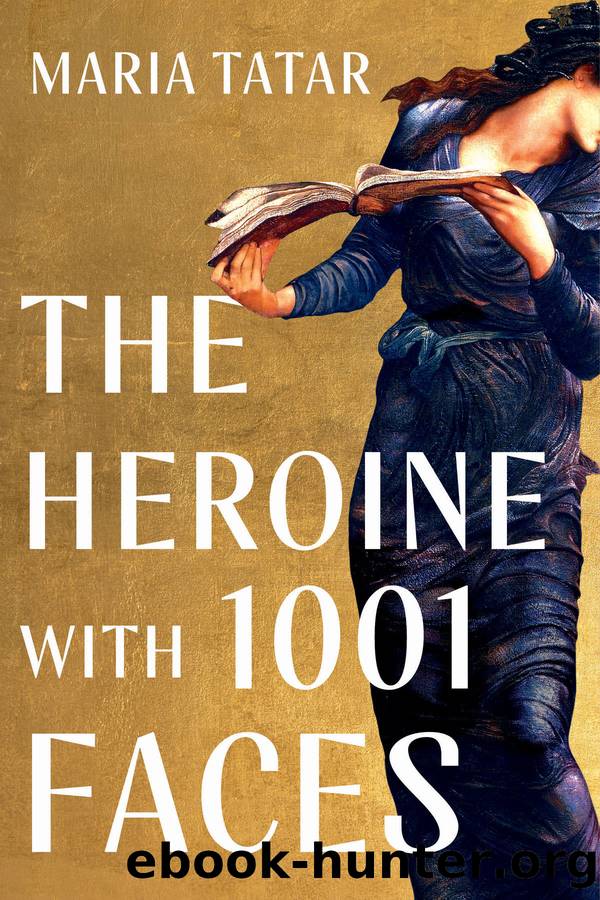The Heroine with 1001 Faces by Maria Tatar

Author:Maria Tatar [Tatar, Maria]
Language: eng
Format: epub
Published: 2021-08-10T00:00:00+00:00
Literature as the spouse who will always remain âfond and faithfulâ! And what else is the âlittle familyâ that has issued forth but literary progeny? Louisa May Alcott is more than likely the real-life old maid described in âHappy Women.â She is, in any case, one of that number, a spinster par excellence, who gives birth to Little Women, a work marked by many literary forebears. With a touch of regret, Alcott once wrote that her stories were like offspring: âI sell my children, and though they feed me, they donât love me as Annaâs doâ (Anna was the authorâs older sister and the inspiration for Meg of Little Women). But through her literary issue, Alcott was able to âcherishâ the talent she possessed, âusing it faithfully for the good of others,â and turning her life story into a âbeautiful success.â Writing came to rhyme with doing good.
In 1979, during the high tide of second-wave feminism, with its harsh critique of male-centered ideologies, Sandra Gilbert and Susan Gubar published a volume of literary criticism with a title alluding to Bertha Mason, the captive âmonsterâ in Charlotte Brontëâs Jane Eyre. The Madwoman in the Attic documented in detail the degree to which Western culture defines the Author as âa father, a progenitor, a procreator, an aesthetic patriarch whose pen is an instrument of generative power.â Everything that happens in the stories that constitute the literary canon can be seen as Athena is to Zeus, a brainchild of a male writer. The âman of lettersâ becomes not just authoritative and influential but also heroic, a spiritual trailblazer and patriarchal leader.31
If Western religion installs a male God as the creator of all things, and the culture surrounding it assimilates that model for all creative efforts, where does that leave women? That is the question Gilbert and Gubar spend several hundred pages answering. Can women also produce brainchildren or are they limited to biological procreation? Louisa May Alcott charted one path for the female writer, giving us the unprecedented story of the birth of the artist as a young woman, setting her tale in a time that is hostile to the notion of women making a living from writing. Strong-willed Josephine March becomes not just a woman who asserts her right to self-expression and professional self-actualization but also a role model for the real-life readers who come after her (just like her author, Louisa May Alcott).
To measure Joâs impact on girl readers, we can turn to another literary success story: the British Harry Potter series. Its author, J. K. Rowling, tells us: âMy favorite literary heroine is Jo March. It is hard to overstate what she meant to a small, plain girl called Jo, who had a hot temper and a burning ambition to be a writer.â Or listen to Ursula Le Guin, who writes: âI know that Jo March must have had real influence upon me when I was a young scribbler. . . . She is as close as a sister and common as grass.
Download
This site does not store any files on its server. We only index and link to content provided by other sites. Please contact the content providers to delete copyright contents if any and email us, we'll remove relevant links or contents immediately.
The Power of Myth by Joseph Campbell & Bill Moyers(1014)
Half Moon Bay by Jonathan Kellerman & Jesse Kellerman(955)
Inseparable by Emma Donoghue(937)
A Social History of the Media by Peter Burke & Peter Burke(936)
The Nets of Modernism: Henry James, Virginia Woolf, James Joyce, and Sigmund Freud by Maud Ellmann(836)
The Spike by Mark Humphries;(766)
The Complete Correspondence 1928-1940 by Theodor W. Adorno & Walter Benjamin(749)
A Theory of Narrative Drawing by Simon Grennan(742)
Culture by Terry Eagleton(724)
Ideology by Eagleton Terry;(696)
Bodies from the Library 3 by Tony Medawar(683)
World Philology by(678)
Farnsworth's Classical English Rhetoric by Ward Farnsworth(674)
Game of Thrones and Philosophy by William Irwin(671)
High Albania by M. Edith Durham(659)
Adam Smith by Jonathan Conlin(649)
A Reader’s Companion to J. D. Salinger’s The Catcher in the Rye by Peter Beidler(647)
Comic Genius: Portraits of Funny People by(616)
Monkey King by Wu Cheng'en(611)
